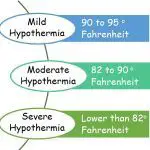The things which have life are living things, while the things which do not have life are non-living things. But if we try to find out the matter in deep, we will notice many important aspects on which we can differentiate living and non-living things. The most important point is that living things can reproduce and can give birth to the young of their kind, which non-living … [Read more...] about Difference Between Living and Non-Living Things
Science
Difference Between Local and General Anaesthesia
We can categorize anaesthesia into two prominent categories- local and general, based on the site and potential of action. Local anaesthesia is preferred during minor surgeries. Doctors use them when they want to numb only a particular region of your body. Even after injecting them, the patient remains conscious of his situation and can feel the other emotions. In … [Read more...] about Difference Between Local and General Anaesthesia
Difference Between Obesity and Morbid Obesity
Obesity and morbid obesity are the two health conditions where the body starts depositing excess fat. But after comparing these two conditions, you can see that they vary a lot. We can differentiate them based on many parameters like body mass index (BMI), death rate, ways of treatment etc. For an obese person, the BMI index ranges from 30 to 39. But the person suffering … [Read more...] about Difference Between Obesity and Morbid Obesity
Difference Between Pug and Bulldog
Pug and bulldog are adorable, cute, funny faces with wrinkly skin. You might have seen many trending videos featuring these two lovely dog breeds. The pugs originated in china for the first time. Well known for their wrinkled cute smashed face with Q-tail, the pugs are irresistible and a playful dog breed. Pugs have small sizes and large, round heads. Their eyes are large … [Read more...] about Difference Between Pug and Bulldog
Difference Between Hypothermia and Hyperthermia
Hypothermia and hyperthermia are the situations related to overwhelmed body temperatures. Our body functions optimally around 37 °C. The body can withstand the change of a few degrees up and down, but things might start malfunctioning if the temperature fluctuates beyond that. Hypothermia, on the one hand, happens when you get exposed to a cold, wet or windy environment for … [Read more...] about Difference Between Hypothermia and Hyperthermia





